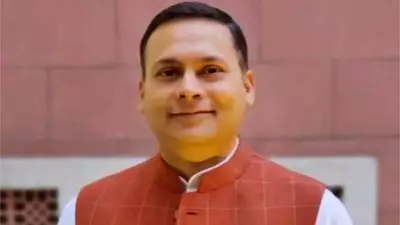
The hallowed halls of India's Parliament recently witnessed an unusual debate that transcended typical political discourse and ventured into the complex territory of cultural expression, dignity, and gender politics. The controversy erupted when Rahul Gandhi's celebratory dance gesture, specifically a 'thumka,' became the center of a heated political storm.
The Parliamentary Performance That Divided Opinions
During a parliamentary session, Congress leader Rahul Gandhi performed what observers described as a 'thumka' - a traditional Indian dance move involving hip movements - while celebrating a political point. This seemingly innocuous gesture quickly transformed into a major point of contention, with critics and supporters drawing battle lines over what constitutes appropriate behavior in the nation's highest legislative body.
Cultural Expression or Breach of Decorum?
The incident raises fundamental questions about the intersection of cultural expression and political dignity. Supporters argue that the thumka represents authentic Indian cultural expression and should be celebrated rather than condemned. They view the criticism as elitist and disconnected from India's rich tradition of expressive dance forms.
Opponents, however, maintain that Parliament demands a certain level of decorum and that such gestures undermine the institution's dignity. This perspective frames the thumka as inappropriate for the solemn environment of legislative proceedings.
Gender Politics and the Dancing Body
Beneath the surface of this controversy lies a complex web of gender politics. The criticism of Gandhi's dance moves often carries subtle undertones of masculinity politics, questioning whether such expressive gestures align with traditional expectations of male political leadership.
This incident mirrors similar debates globally about how politicians' bodies become sites of political commentary, with dance moves, clothing choices, and physical mannerisms often becoming loaded with political meaning.
The Bigger Picture: What This Reveals About Indian Democracy
Beyond the immediate controversy, the thumka debate reflects broader tensions in Indian politics:
- Cultural Authenticity vs. Institutional Formality: The struggle between embracing indigenous cultural expressions and maintaining Western-derived parliamentary traditions
- Generational Divide: Contrasting expectations between older political establishments and younger, more expressive leaders
- Performance Politics: How physical expression becomes part of political messaging in the age of visual media
- Selective Outrage: The inconsistent application of dignity standards across political parties and situations
Historical Context of Political Gestures
This isn't the first time physical gestures have sparked political controversies in India. From Narendra Modi's bear hugs to various politicians' campaign dance moves, the Indian political landscape has increasingly incorporated physical expression as part of political communication.
What makes the thumka incident particularly significant is its occurrence within Parliament itself, traditionally seen as a space governed by strict protocols and formal behavior.
The Future of Political Expression in India
As India continues to navigate its identity as both a modern democracy and ancient civilization, debates like the thumka controversy will likely become more frequent. They represent the growing pains of a political culture trying to define what authentic Indian leadership looks like in the 21st century.
The ultimate resolution of such conflicts will shape not just parliamentary decorum but the very character of Indian political expression for generations to come.





